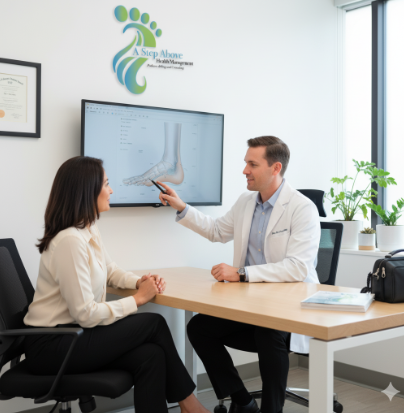Effective date: October 1, 2025. That’s when the FY 2026 ICD‑10‑CM diagnosis code set takes effect for all outpatient encounters and inpatient discharges through September 30, 2026. If your podiatry practice isn’t ready, denials will spike and cash flow will lag.
Below is a practical, podiatry‑focused roadmap that blends coding accuracy, documentation upgrades, and front‑office operations so you hit October 1 at full speed.
What’s changing at a glance
Scope of change: Hundreds of new and revised diagnosis codes. Several chapters receive notable expansion, particularly Chapter 12 (Diseases of the Skin and Subcutaneous Tissue) and Chapter 19 (Injury, Poisoning, and Other Consequences of External Causes).
• Guideline updates: The FY 2026 Official Guidelines include clarifications that affect sequencing, combination coding, social determinants of health (SDOH), and certain chronic conditions.
• Impact on podiatry: While the headline expansions aren’t exclusively “foot‑only,” the documentation bar rises for wounds, trauma, and complications that podiatry teams see routinely. Expect payers to scrutinize laterality, anatomic site, depth/severity, and cause.

High‑impact areas for foot & ankle care
1. Non‑pressure ulcer specificity (reinforced): Payers increasingly expect explicit documentation of site, laterality, and severity (skin breakdown vs. fat vs. muscle vs. bone) for non‑pressure ulcers. Your note must support the L97‑ series selection you report. Expand problem lists and templates to capture: location (heel/midfoot/other), staging of tissue involvement, ischemia/infection status, and progress toward closure.
2. Injury/trauma detail: The injury chapter gains additional granularity (e.g., new anatomic site options, laterality, external cause details). For podiatry, that means better differentiation of foot/ ankle contusions, lacerations, bites, punctures, sprains, and sequelae. Train clinicians to record mechanism of injury and sequela timing (initial vs. subsequent vs. sequela) so coders can select the correct 7th character.
3. Pain and symptom code clean‑up: Edits in the R‑code section (symptoms/signs) tighten when a symptom code is appropriate and when you should move directly to a definitive diagnosis. If you treat pain‑first complaints (e.g., heel pain), make sure the assessment either pins a diagnosis (plantar fasciitis, stress fracture, neuritis) or clearly supports why a symptom code is necessary.
4. SDOH (Z‑codes) usage: The guidelines continue to emphasize capturing SDOH when it affects clinical decision‑making (e.g., transportation issues that delay wound visits, food insecurity complicating diabetes control). Build brief SDOH prompts into intake or MA rooming flows.
Documentation upgrades to build into your EHR now
• Wounds: Always record size (L×W×D), tissue type, drainage, odor, peri‑wound skin, infection signs, vascular status, and exact anatomic site. Map these to macros so the note renders discrete elements that support L97‑ coding.
• Diabetic foot complications: Tie each foot finding to the diabetes type and complication (neuropathy, angiopathy) when present. This drives risk capture and justifies advanced care (imaging, vascular referral, offloading, CTPs).
• Injury encounters: Prompt providers to choose A/D/S 7th character and to specify initial vs. subsequent vs. sequela. Include work/sports/home mechanism if material to care.
• Follow‑up visits: Reserve “subsequent encounter” for active treatment completed and routine healing underway; otherwise, remain in “initial” phase if casting, debridement, or active wound procedures continue.
Front‑office & billing prep
• Eligibility & benefits checks: From 9/25 onward, confirm benefits and deductibles for October appointments; your clearinghouse and EHR should be loaded with the FY 2026 code files. •
Coder huddles: Run through top 50 podiatry diagnoses your practice uses (L97‑, M72.2 plantar fasciitis, M76 Achilles tendinopathy, M77 metatarsalgia, E11.621 DFU, etc.) and review any tabular addenda notes that shift inclusion/excludes logic.
• Denial watchlist: Build a dashboard for your top payers for the month of October to catch N620 ICD‑10 validation denials early. Create a same‑day correction loop.
Testing and go‑live checklist
1. Import FY 2026 ICD‑10‑CM tables into your EHR and practice management system.
2. Validate favorite/problem list mappings for common podiatry conditions.
3. Update charge slip and encounter templates with any refreshed descriptions.
4. Educate providers on new guideline clarifications (SDOH, HIV, multiple sites, diabetes in remission,
etc.).
5. Run test claims to each major payer before Oct 1 if your clearinghouse allows it.
How A Step Above Health Mgmt can help We’ll load and validate the new codes in your systems, train your coders using your actual charts, and monitor first‑pass acceptance in October with payer‑specific feedback. We’ll also build targeted query templates to shore up documentation gaps that drive denials.